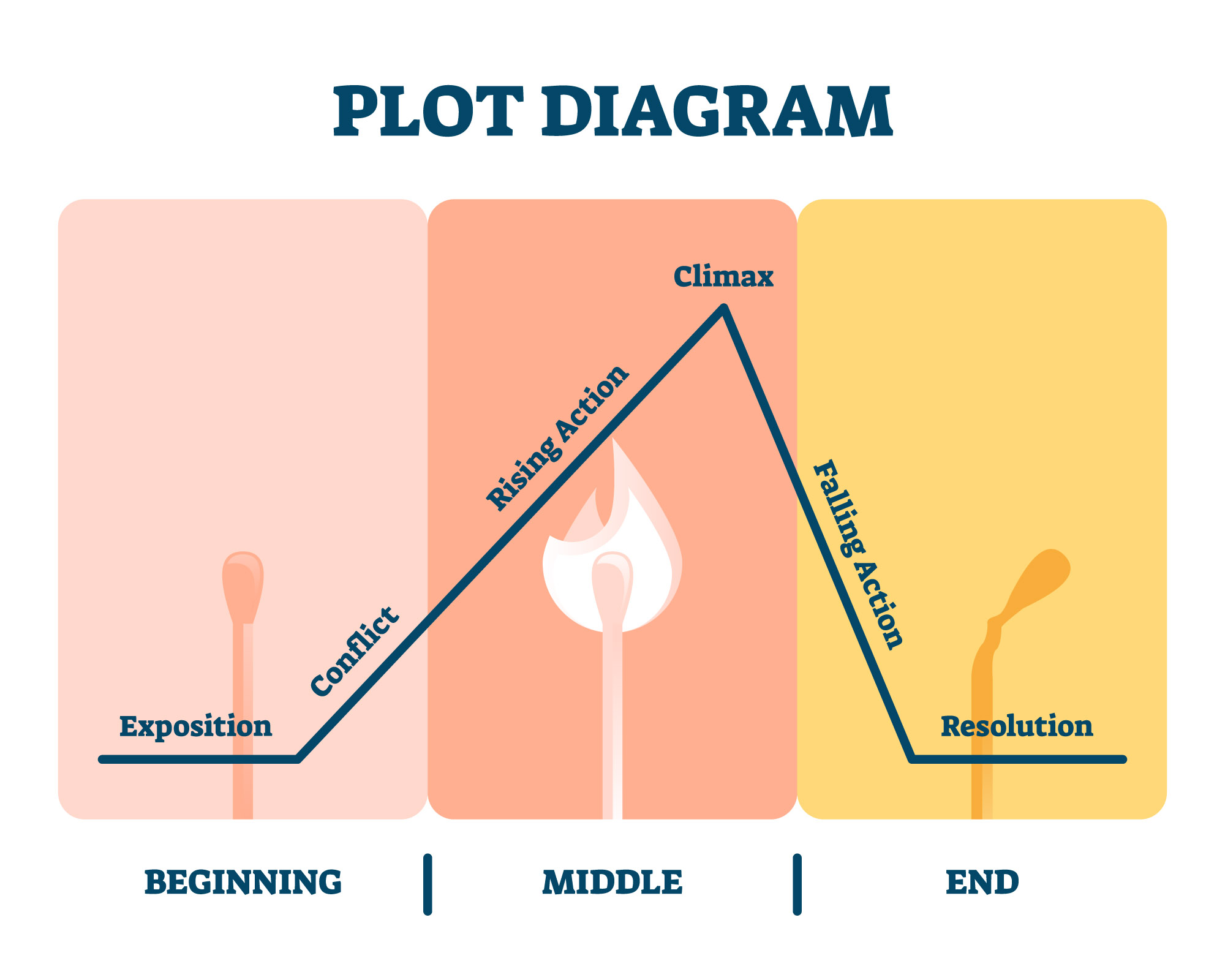
Understand the Basic Structure: Most plots follow a similar structure: exposition (introduction of characters and setting), rising action (development of conflict), climax (turning point), falling action (events leading towards the resolution), and resolution (conclusion of the story). Understanding this structure can provide a roadmap for your plot.
Establish Conflict: Conflict is the heart of any plot. It can be a clash between characters, a struggle within a character’s mind, or a battle against external forces or circumstances. Conflict drives the action, motivates your characters, and keeps your readers invested in the story.
Create Engaging Beginnings: The start of your story should hook your readers and give them a reason to keep turning the pages. Introduce your main character, establish the setting, and hint at the conflict to come.
Plan Your Story Arc: Outline the major events or milestones in your story. This provides a roadmap for your plot, helping you navigate from the beginning to the end. Keep in mind that the plot doesn’t have to be linear; flashbacks, foreshadowing, or non-linear timelines can add interest and complexity.
Develop Subplots: Subplots are secondary storylines that complement the main plot. They can add depth to your characters, reinforce the theme, or provide relief from the main plot tension. Just ensure they contribute to the overall story and don’t distract from the main plot.
Drive Towards the Climax: The climax is the point of highest tension or drama in your story—the moment where the main conflict comes to a head. Your plot should build towards this point, keeping your readers on the edge of their seats.
Resolve Effectively: After the climax, wrap up the remaining loose ends and show how the characters have been changed by their experiences. The resolution should be satisfying and make sense based on the events of the story.
Revise and Refine: Once you’ve laid out your plot, revisit it. Are there unnecessary scenes that can be cut? Are there plot holes that need to be filled? Revision is key to ensuring your plot is tight, logical, and compelling.
Remember, the art of plotting is about balance. It’s about creating tension and providing resolution, surprising your readers but also fulfilling their expectations, keeping them guessing yet providing enough clues to make the progression of events believable. When done well, a well-constructed plot can transport your readers, keep them hooked, and leave them eagerly anticipating your next story.








